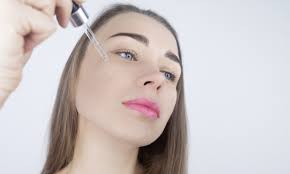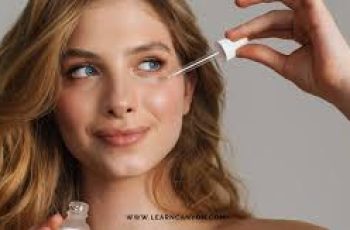
Can You Mix BHA With Vitamin C?
Whether you like exfoliating or not, there’s no denying that you’ll see visible changes in your complexion. Thankfully, we no longer have to rely on physical peels to remove unwanted debris from the surface of our skin.
Chemical peels are nothing new, but their popularity has skyrocketed in recent years, and many of us use exfoliating toners in our skincare routine.
With all of these acids, the question remains: Are there some that should be avoided, while others are more effective in combination? The two main ingredients we want to focus on are vitamin C and beta hydroxy acids, also known
as BHA. So if you want to learn more about how these powerful substances work on your skin, what benefits they provide, and whether you can combine BHA and vitamin C, stay tuned.
What are the benefits of BHAs?
BHA, which stands for Beta Hydroxy Acids, is a family of chemical peels that work deeper into the skin than their close cousins, Alpha Hydroxy Acids (AHAs). They are oil-soluble, which makes them very effective in fighting
problematic and acne-prone skin.
They do this by removing excess sebum from the skin and removing bacteria, debris and other impurities from the pores. These conditions tend to worsen over time and develop into blemishes such as blackheads, redness, and dull
complexion. Due to their high potency, you’d better avoid combining them with other acids. This is due to an increased risk of irritation, where the skin becomes itchy, blotchy, red, and sometimes a rash develops.
The most commonly used BHA in many skin care products is salicylic acid. Derived from willow bark, this acid has a smaller molecular size, which means it can penetrate the lower layers of the skin, preventing further breakouts
and reducing inflammation. The main benefits of salicylic acid are as follows.
Helps unclog pores of bacteria, dirt and debris that can build up and cause whiteheads, blackheads and other blemishes.
Helps reduce and regulate skin’s sebum production. This is especially good for people with oily and acne-prone skin.
It removes dead skin cells from the surface of the skin that cause acne and dull complexion.
Contains anti-inflammatory properties, which means it can help counteract any redness or inflammation on the skin.
If you want to learn more about salicylic acid and other BHAs, check out our dedicated blog post.
What Are the Benefits of Vitamin C?
Vitamin C, also known as ascorbic acid and L-ascorbic acid, is a powerful antioxidant and effective skin care ingredient that can help with a variety of problems.
Supports the lipid barrier and ensures it is strong enough to protect the skin from free radicals such as pollution, UV rays, central heating and other oxidative stress.
Helps brighten the complexion and minimize the appearance of hyperpigmentation. This works by inhibiting the enzyme that produces melanin, which causes skin pigmentation.
Contains anti-inflammatory properties, which means vitamin C can fight redness in the skin.
Increases collagen production, firming the skin, retaining its elasticity and giving it a youthful tone.
Would you like to learn more about vitamin C? Check out our dedicated blog post on The Beauty Insiders.
Now that we’ve quickly reviewed the benefits of BHA and vitamin C, let’s dig a little deeper and learn how to effectively use them together.
Can BHA and Vitamin C be used together?
Yes, you can, but only in specific ways to prevent skin irritation. Here are some examples of how to best use them together.
Option One – Use them at different times of the day
Since these two acids have an acidic pH, layering them can throw your skin’s pH out of balance and cause irritation. To avoid this, it’s best to allow enough time between uses. Many people find that the radiance and antioxidant
protection that vitamin C provides works best when used in their morning routine. Continue to use the BHA at night to allow it to penetrate the skin without bothering with free radical exposure.
Option two – use them on different nights
If you find that the first option causes skin irritation, you may choose to take vitamin C and BHA separately at night. This ensures that each ingredient does its job without battling everyday skin aggressors. While a vitamin C
rub is usually best applied during the day, you’ll find that it’s just as effective at night, thanks to its antioxidant properties, as it repairs existing damage and prevents further damage to the skin.
Here are two popular options, however, there is another option that is best for those who have a tolerance to both ingredients. You can layer vitamin C on top of your BHA. All you have to do is make sure to allow about 20
minutes between uses to allow skin to be soothed and ready for the next step in your routine.
Which comes first, vitamin C or BHA?
If your skin can tolerate using both ingredients in the same routine, it’s best to start with a BHA product. This is because it is an oil-soluble product, so it can penetrate deeper into the skin. It also removes build-up of
dead skin cells and dirt, stripping away any skin barrier, allowing vitamin C and other active ingredients to be absorbed quickly and to show results more quickly.
If you have any doubts about using any of these ingredients, you should consult your doctor or trained professional. I also recommend doing a 24-hour patch test to see if these active ingredients are working for you and your
skin’s needs.
I hope this answers any questions you may have about combining BHA and Vitamin C. Don’t forget to connect with one of our skincare experts on Instagram.


